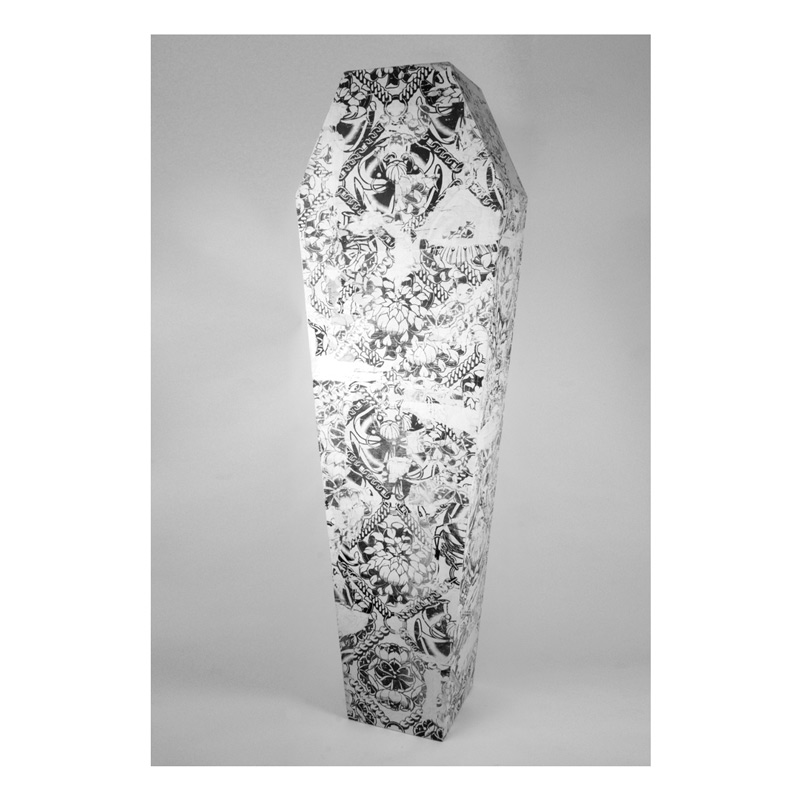
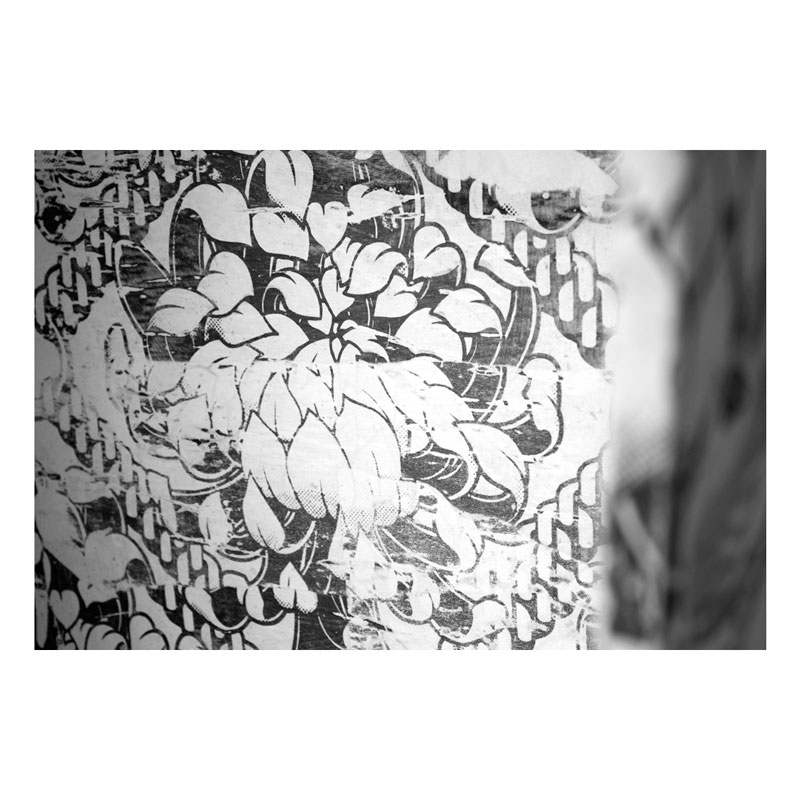
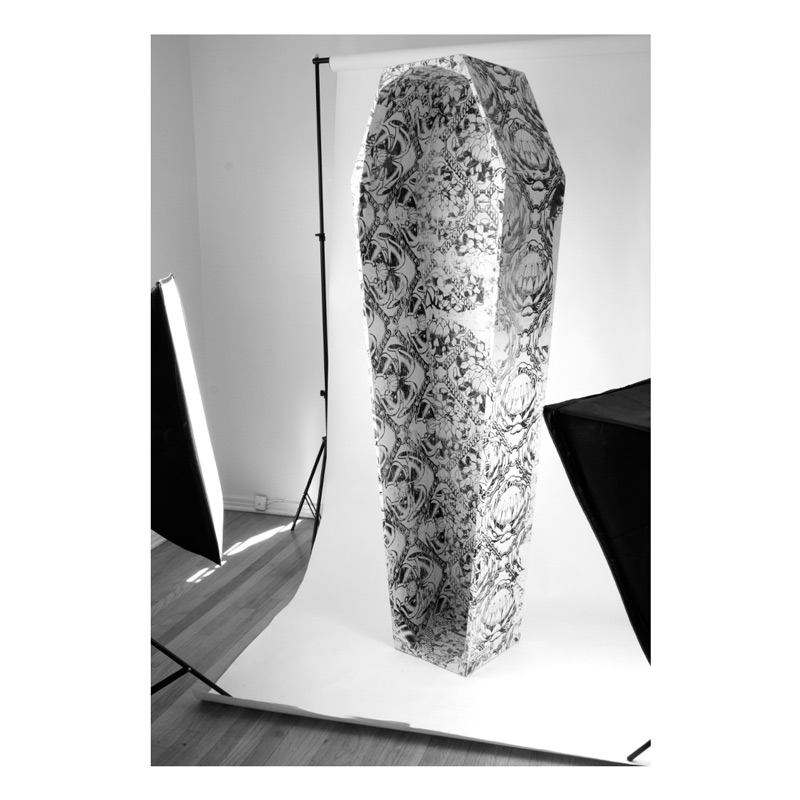
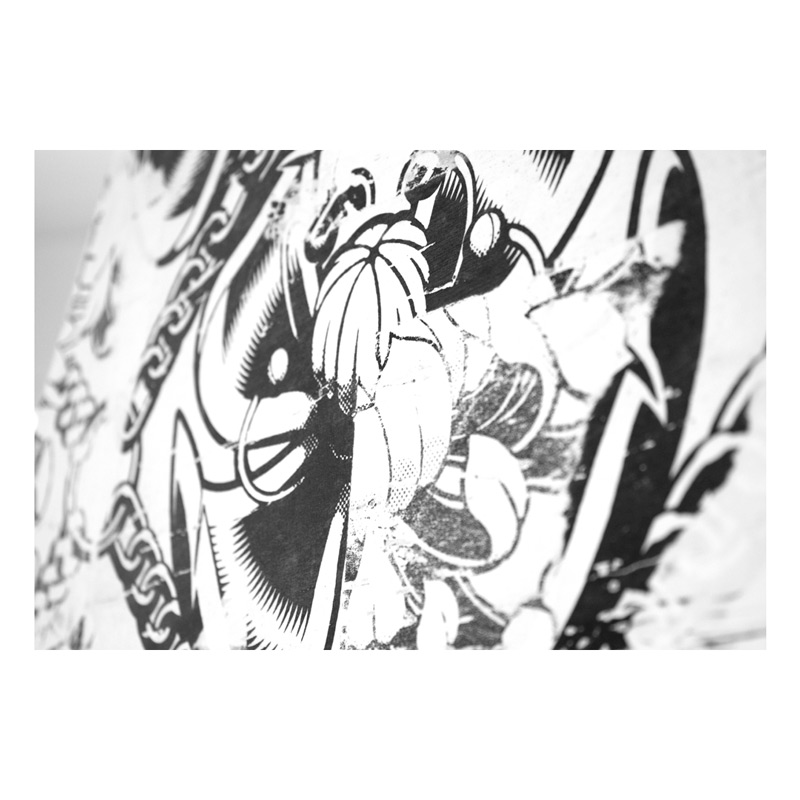
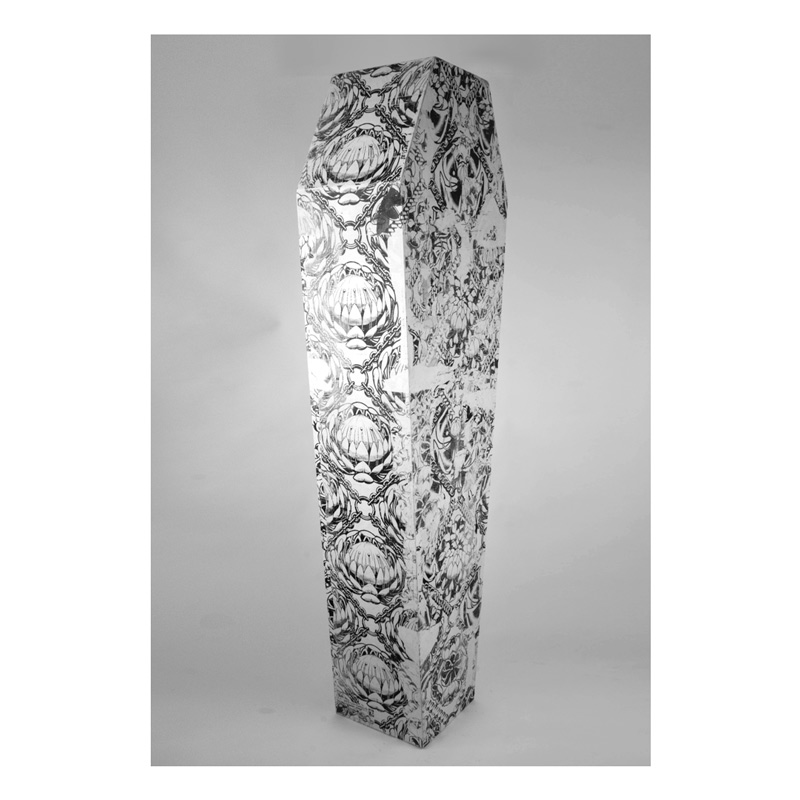
7' x 3' x 2' x 1/4" wooden sculpture with collage wheatpaste PETALS series screen print.
NUGGETS🐣
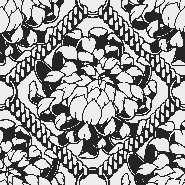 Coffin is the last iteration of the PETALS series created to challenge our cognitive urge to assign meaning to the meaningless. Inhibiting preconceived meaning provides opportunity to view objects in abstraction. By default, the mind associates meaning when presented with a "familiar" object: a narrow vase connotates flowers, a wallet connotates runes (kidding), and a coffin connotates a corpse. The object's meaning is formed by external attributes. Out of context, the object's mirage of meaning fades, revealing its actual emptiness. Coffin breaks its assumed context, challenging viewers to identify the emptiness in everything.
Coffin is the last iteration of the PETALS series created to challenge our cognitive urge to assign meaning to the meaningless. Inhibiting preconceived meaning provides opportunity to view objects in abstraction. By default, the mind associates meaning when presented with a "familiar" object: a narrow vase connotates flowers, a wallet connotates runes (kidding), and a coffin connotates a corpse. The object's meaning is formed by external attributes. Out of context, the object's mirage of meaning fades, revealing its actual emptiness. Coffin breaks its assumed context, challenging viewers to identify the emptiness in everything.
Like objects, words are also meaningless. Take the word home for example. Its meaning is heavily dependent on its ability to structure and contain context. But what happens when the context is stripped away?
Looking at the word for an extended period of time while repeating it brings its emptiness into clarity. The word decomposes into a sound, a syllable, letters, symbols, and shapes. Isolated, its meaning evaporates leaving behind an empty vessel.
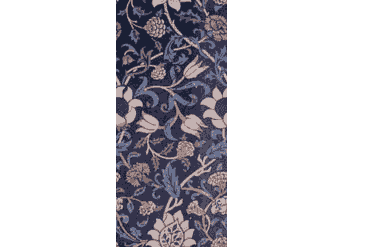
The irony of emptiness and form is evident in repeating textile design, where individual block prints find context within a larger composition. When isolated the repeating block lacks form, often chopping elements in half to match the opposite edge. Once repeated, full objects seamlessly connect. The pattern takes shape and the individual blocks fade out of view. The composition comes into form, but is nonexistent without its formless parts.
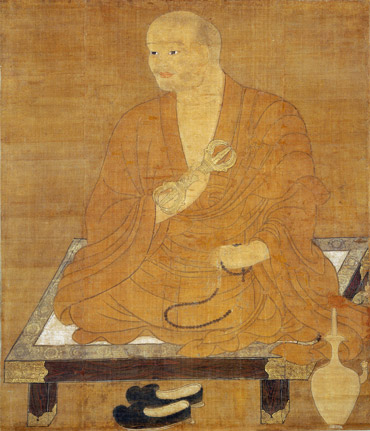
Kūkai, founder of Shingon Buddhism, conceptualized the everpresence of emptiness. This principle entails that all things are ontologically dependent upon one another to retain form. Without larger body context, all individual parts are empty. This concept is taken from the Heart Sutra stating "form is emptiness, emptiness is form." Words are empty vessels without the memories we place inside them, and memories do not take form without a language to structure them.
